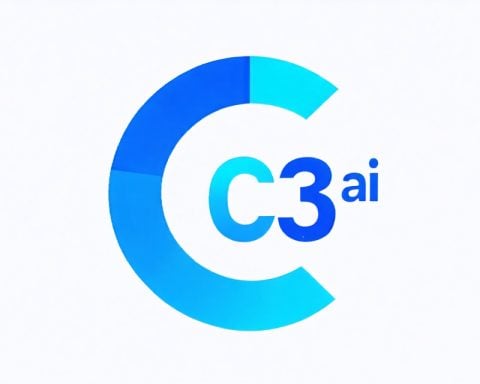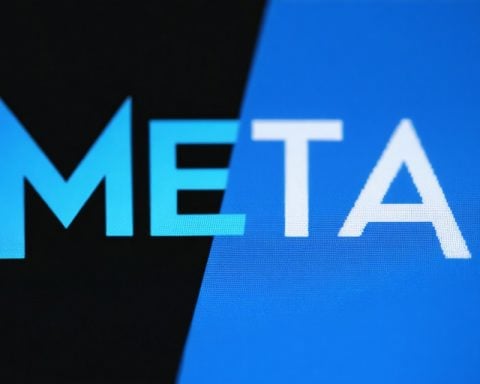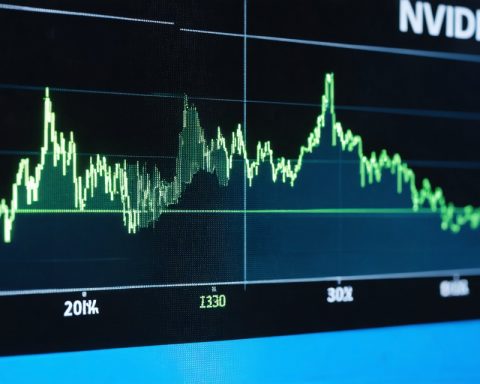On Thursday morning, Nvidia made headlines by hitting an all-time high during the morning trading session, amid mixed investor response following its latest earnings report. The tech giant is tantalizingly close to becoming the first ever firm to achieve a $4 trillion market valuation.
Key Highlights
Nvidia’s shares soared nearly 5% shortly after Wall Street opened, reaching an unprecedented intraday high of $152.89. This growth momentarily pushed Nvidia’s market value to a staggering $3.76 trillion, inching it nearer to the historical milestone.
However, this upward trend was short-lived. By 10:30 a.m., share prices had dropped to $140.70, marking an 8% decrease from earlier in the session. As the morning proceeded, the stock rebounded slightly, reducing the loss to about 1%, stabilizing around $144 by 11:15 a.m.
The trading atmosphere was exceptionally dynamic, with over 200 million Nvidia shares exchanged in the first 100 minutes, surpassing its average daily trading volume based on the past 20 sessions, as reported by Yahoo Finance.
Staggering Figures
In an hour, Nvidia’s market worth plummeted by approximately $300 billion. To put this in perspective, only 25 US companies boast valuations exceeding $300 billion.
Context and Outlook
Despite strong earnings, Nvidia’s modest 7% projected growth for the upcoming quarter was seen as lackluster, causing investor caution. Analysts remain optimistic with upward revisions on share price targets post-earnings. A $163 share price is all Nvidia requires to hit the elusive $4 trillion mark, well within reach according to some analysts’ forecasts.
Is Nvidia’s $4 Trillion Milestone Just Hype? The Surprising Impact on Global Markets
In the rapidly evolving world of technology, Nvidia stands out not only for its groundbreaking advancements but also for its enormous market influence. As the company nearly touched a $4 trillion market valuation, it sparked not just excitement among investors but also significant discussions about its broader implications on global markets and industries.
Nvidia: More Than Just Numbers
While the recent buzz has mostly centered around Nvidia’s market value, there is more to consider about how such monumental figures influence the tech landscape and beyond.
One of Nvidia’s primary strengths lies in its role as a leader in AI and graphics processing technologies. These innovations have transformed industries ranging from gaming and entertainment to automotive and healthcare. The powerful processing capabilities of Nvidia chips have enabled developers to create more complex AI models, enhancing machine learning applications and making them accessible to various sectors.
Pros and Cons: The Ripple Effect
Advantages:
– Technological Growth: By pushing boundaries, Nvidia propels advancements in technology, offering new tools for industries like autonomous driving, where precise computations are vital.
– Economic Boost: A rising Nvidia stock price can boost investor confidence and stimulate economic activity, especially in tech-centric regions like Silicon Valley.
– Job Creation: With expansion, Nvidia often invests in talent, fostering job opportunities and skill development in high-tech fields.
Disadvantages:
– Market Volatility: As witnessed, Nvidia’s stock can rapidly fluctuate, potentially unsettling investors and influencing market stability.
– Resource Allocation: There is a risk of resource concentration, where too much investment focuses on high-performing stocks, possibly neglecting smaller firms that drive innovation.
– Price Sensitivity: As Nvidia products become more integral, industries may face increased costs, affecting consumer prices and accessibility.
Questions on the Horizon
A looming question is how Nvidia’s trajectory will affect global tech policies. Will regulatory bodies start scrutinizing such powerful tech giants for antitrust concerns? The potential for monopolistic practices or dominance in critical sectors cannot be sidelined.
Another concern is how global disparities might widen. As Nvidia ramps up, are developing nations falling behind due to lack of access to advanced technologies? What measures are in place to ensure equitable tech advancement?
Looking Ahead: Hope or Hype?
Will Nvidia maintain its trend towards a $4 trillion valuation? While some analysts express confidence, predicting supportive market conditions, others warn of inherent risks such as market corrections or demand fluctuations for tech products.
As stakeholders monitor Nvidia’s market moves, the company remains a catalyst for technological change, for better or worse. Its influence extends far beyond Wall Street, reaching into the very core of digital transformation.
For those interested in the broader tech market impact, reliable resources can be found at TechCrunch and Wired, which frequently discuss the intersection of technology, market dynamics, and society.























